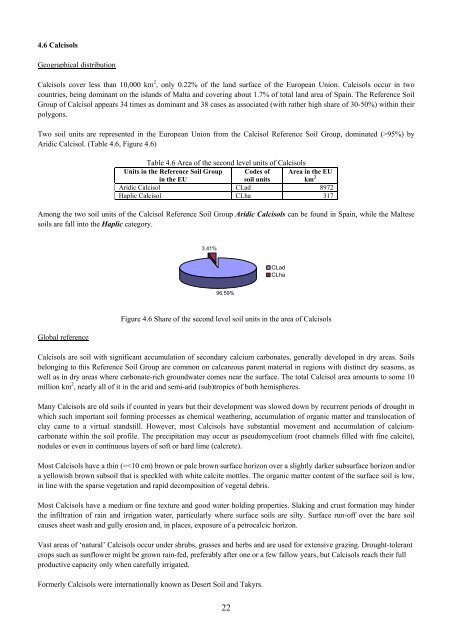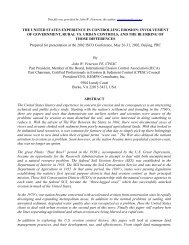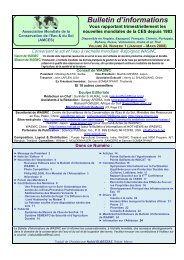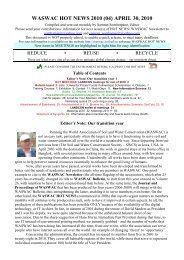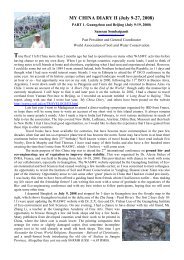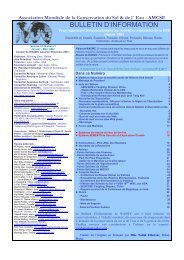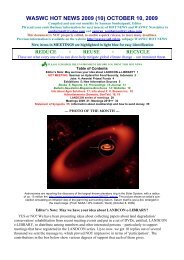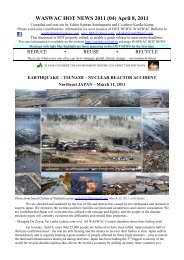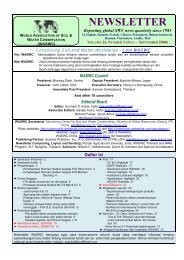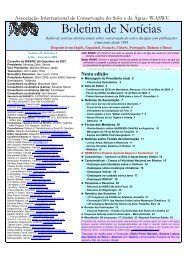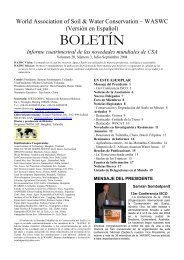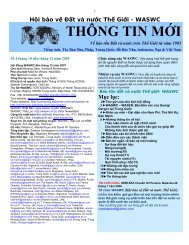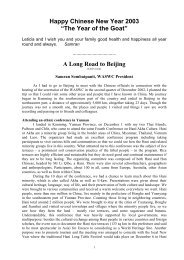Soils of the European Union - European Soil Portal - Europa
Soils of the European Union - European Soil Portal - Europa
Soils of the European Union - European Soil Portal - Europa
You also want an ePaper? Increase the reach of your titles
YUMPU automatically turns print PDFs into web optimized ePapers that Google loves.
4.6 CalcisolsGeographical distributionCalcisols cover less than 10,000 km 2 , only 0.22% <strong>of</strong> <strong>the</strong> land surface <strong>of</strong> <strong>the</strong> <strong>European</strong> <strong>Union</strong>. Calcisols occur in twocountries, being dominant on <strong>the</strong> islands <strong>of</strong> Malta and covering about 1.7% <strong>of</strong> total land area <strong>of</strong> Spain. The Reference <strong>Soil</strong>Group <strong>of</strong> Calcisol appears 34 times as dominant and 38 cases as associated (with ra<strong>the</strong>r high share <strong>of</strong> 30-50%) within <strong>the</strong>irpolygons.Two soil units are represented in <strong>the</strong> <strong>European</strong> <strong>Union</strong> from <strong>the</strong> Calcisol Reference <strong>Soil</strong> Group, dominated (>95%) byAridic Calcisol. (Table 4.6, Figure 4.6)Table 4.6 Area <strong>of</strong> <strong>the</strong> second level units <strong>of</strong> CalcisolsUnits in <strong>the</strong> Reference <strong>Soil</strong> Groupin <strong>the</strong> EUCodes <strong>of</strong>soil unitsArea in <strong>the</strong> EUkm 2Aridic Calcisol CLad 8972Haplic Calcisol CLha 317Among <strong>the</strong> two soil units <strong>of</strong> <strong>the</strong> Calcisol Reference <strong>Soil</strong> Group Aridic Calcisols can be found in Spain, while <strong>the</strong> Maltesesoils are fall into <strong>the</strong> Haplic category.3.41%CLadCLha96.59%Global referenceFigure 4.6 Share <strong>of</strong> <strong>the</strong> second level soil units in <strong>the</strong> area <strong>of</strong> CalcisolsCalcisols are soil with significant accumulation <strong>of</strong> secondary calcium carbonates, generally developed in dry areas. <strong><strong>Soil</strong>s</strong>belonging to this Reference <strong>Soil</strong> Group are common on calcareous parent material in regions with distinct dry seasons, aswell as in dry areas where carbonate-rich groundwater comes near <strong>the</strong> surface. The total Calcisol area amounts to some 10million km 2 , nearly all <strong>of</strong> it in <strong>the</strong> arid and semi-arid (sub)tropics <strong>of</strong> both hemispheres.Many Calcisols are old soils if counted in years but <strong>the</strong>ir development was slowed down by recurrent periods <strong>of</strong> drought inwhich such important soil forming processes as chemical wea<strong>the</strong>ring, accumulation <strong>of</strong> organic matter and translocation <strong>of</strong>clay came to a virtual standstill. However, most Calcisols have substantial movement and accumulation <strong>of</strong> calciumcarbonatewithin <strong>the</strong> soil pr<strong>of</strong>ile. The precipitation may occur as pseudomycelium (root channels filled with fine calcite),nodules or even in continuous layers <strong>of</strong> s<strong>of</strong>t or hard lime (calcrete).Most Calcisols have a thin (=


